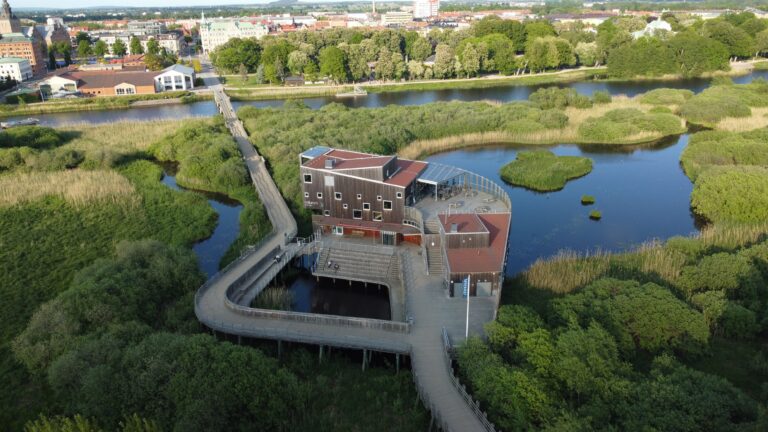Introduction
Mangroves, often overlooked and undervalued, play a crucial role in maintaining the health and sustainability of coastal ecosystems. As climate change and human activities continue to impact our planet, the significance of mangrove reforestation in coastal conservation cannot be overstated. This blog post delves into the importance of mangroves, the threats they face, and why restoring and preserving these ecosystems is essential for the well-being of both coastal communities and the environment.
Definition and Characteristics of Mangroves
Mangroves are unique ecosystems found along coastal areas where saltwater and freshwater mix. These resilient and diverse coastal forests thrive in intertidal zones, characterized by the ebb and flow of tides. Mangroves are typically composed of various tree and shrub species that have evolved to withstand harsh saline conditions. Their distinctive characteristics include specialized root systems, such as stilt roots and pneumatophores, which aid in nutrient absorption and stability in waterlogged soils.
The trees within mangrove forests are well-adapted to fluctuating water levels, with some species capable of tolerating immersion in saltwater for extended periods. The leaves of mangrove plants often possess a waxy coating to minimize water loss and filter out salt. These adaptations collectively contribute to the unique appearance and functionality of mangrove ecosystems.
Unique Adaptations to Coastal Environments
Mangroves have evolved a range of remarkable adaptations to thrive in the challenging coastal environment. One of the most distinctive features is the complex root systems that serve multiple purposes. Stilt roots provide stability in muddy soils and prevent the trees from toppling over during tidal changes. Pneumatophores, specialized vertical roots, emerge from the soil to facilitate gas exchange, allowing the trees to obtain oxygen in waterlogged conditions.
Additionally, mangroves have developed a unique reproductive strategy known as vivipary. Instead of dispersing seeds, mangrove trees germinate their seeds while still attached to the parent plant. Once the seedling is sufficiently developed, it drops into the water below, where it can float until it finds a suitable substrate for growth. This adaptation enhances the chances of survival in the dynamic coastal environment.
The ability of mangroves to filter and excrete salt through their leaves, a process known as salt excretion, further demonstrates their adaptability to high salinity levels. This mechanism helps prevent salt buildup within the plant, allowing mangroves to flourish in areas where many other plant species would struggle to survive.
In conclusion, mangroves stand as a testament to nature’s resilience and adaptation. Their unique characteristics and specialized adaptations not only make them fascinating ecosystems but also underline their crucial role in protecting coastlines and providing a habitat for diverse marine life. Understanding and preserving these remarkable coastal forests is essential for maintaining the delicate balance of our planet’s ecosystems.
Coastal Protection against Storms and Erosion
Mangroves play a crucial role in safeguarding coastal areas against the destructive forces of storms and erosion. Their intricate root systems act as natural barriers, absorbing and dissipating wave energy, effectively reducing the impact of storms on coastal communities. The dense network of roots not only stabilizes the shoreline but also helps prevent soil erosion, preserving the integrity of coastal ecosystems. This vital ecosystem service provided by mangroves is particularly essential in regions prone to tropical storms and hurricanes, offering a cost-effective and sustainable solution for coastal protection.
Incorporating mangrove conservation into coastal management plans can enhance resilience to climate-related events, ensuring the safety of both human populations and the diverse flora and fauna that inhabit these areas.
Biodiversity Hotspot and Fishery Importance
Mangroves are renowned as biodiversity hotspots, fostering a rich array of plant and animal species. The complex root systems and brackish water of mangrove ecosystems create a unique habitat that serves as a nursery for various marine species. Many commercially important fish species, including shrimp, crab, and various finfish, rely on mangroves for their early life stages. The abundance of nutrients and shelter provided by mangroves supports the growth and development of these species, contributing significantly to local fisheries.
Conserving mangrove ecosystems is essential for maintaining biodiversity, ensuring the sustainability of fisheries, and supporting the livelihoods of coastal communities that depend on these resources. The interconnectedness of mangroves with adjacent marine environments underscores their role as critical contributors to global biodiversity and food security.
Carbon Sequestration and Climate Change Mitigation
Mangroves are formidable carbon sequestration champions, capturing and storing large amounts of atmospheric carbon dioxide. The trees and vegetation in mangrove forests accumulate carbon in their biomass and soils, playing a vital role in mitigating climate change. The ability of mangroves to sequester carbon is particularly significant given the increasing concerns about rising greenhouse gas concentrations and global warming.
Protecting and restoring mangrove ecosystems is an effective strategy for climate change mitigation. Governments, conservation organizations, and local communities can collaborate to enhance the carbon sequestration potential of mangroves, contributing to global efforts to combat climate change. Recognizing the value of mangroves in climate change mitigation is crucial for developing sustainable practices that safeguard these ecosystems and the benefits they provide to both people and the planet.




